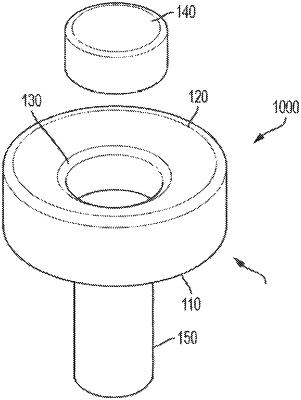| CPC A61F 2/3804 (2013.01) [A61F 2002/30224 (2013.01); A61F 2002/30593 (2013.01); A61F 2002/3827 (2013.01)] | 19 Claims |

|
1. A method of implanting a radial orthopedic implant apparatus, the method comprising the steps of:
coupling an insert member to a generally cylindrical body by inserting the insert member into a centrally disposed bore of the body that is extends along a longitudinal axis through a concave upper surface of the body that has a bottom surface opposite the upper surface along the longitudinal axis, wherein the body includes at least one stem that extends from the bottom surface, and the body and insert member comprise respective first and second materials that are different from each other; and
implanting the coupled insert member and the body into a medullary canal of a radial bone
wherein the coupling step comprises inserting the insert member into the bore such that no portion of the insert member extends out with respect to the concave upper surface of the body in an upward direction that is defined from the bottom surface of the body toward the concave upper surface of the body along the longitudinal axis.
|